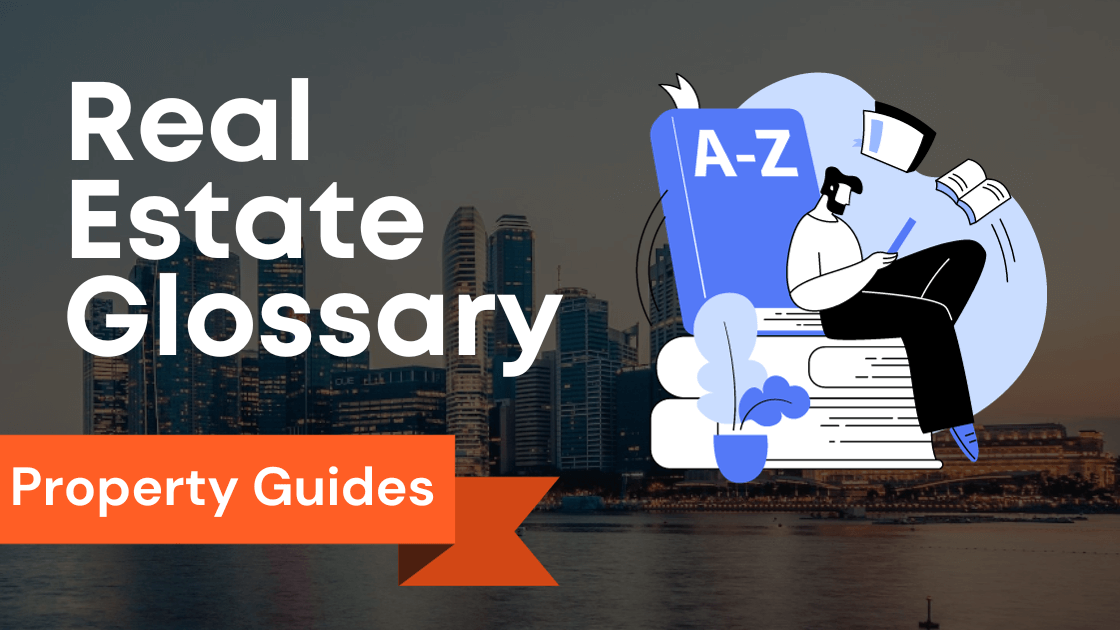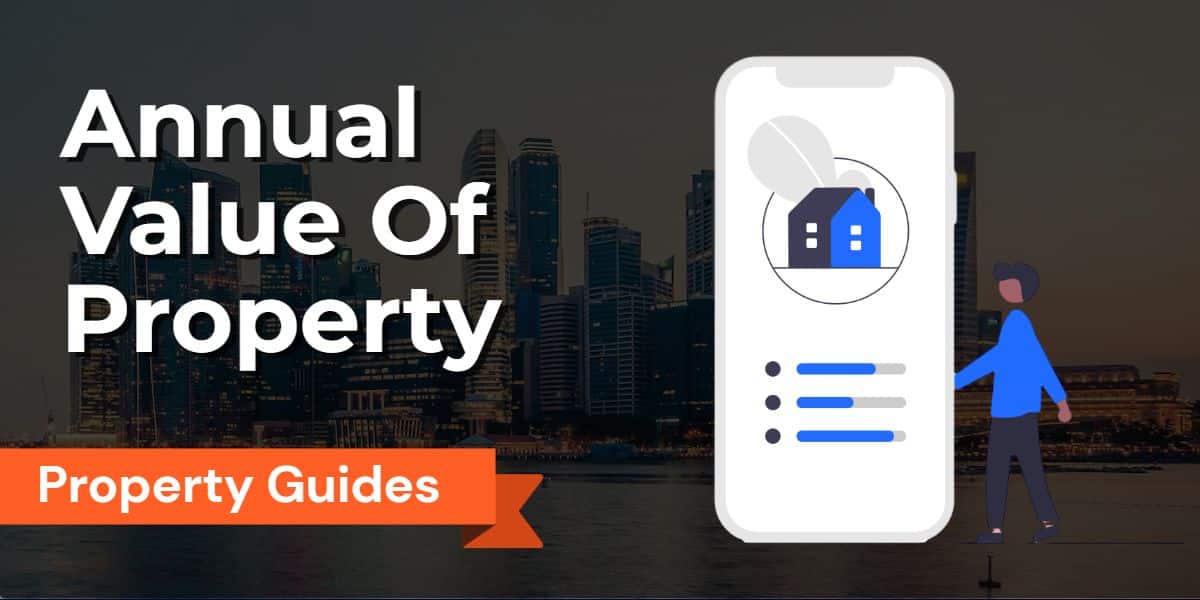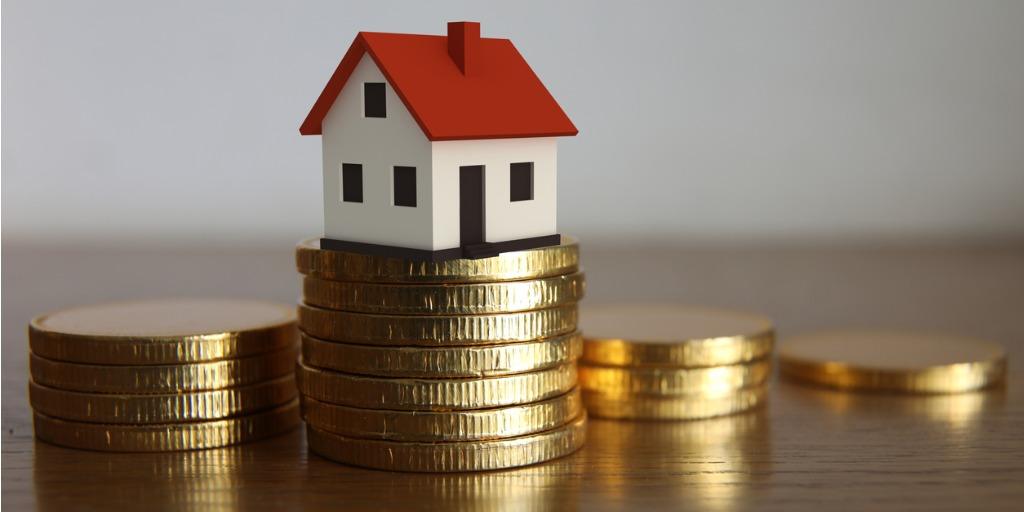
Are you about to sign a lease agreement for your first rental property?
Rental stamp duty is a tax that you must pay on your lease agreement, and it’s required by the Inland Revenue Authority of Singapore (IRAS).
| Average Annual Rent (AAR*) | Rental stamp duty rates |
| AAR does not exceed S$1,000 | Exempted |
| AAR exceeds S$1,000 | |
| Lease period is 4 years or less | 0.4% of total rent for the lease period |
| Lease period is more than 4 years, or for any indefinite term | 0.4% of 4 times the AAR for the lease period |
*AAR refers to the higher of the average annual contractual or annualised market rent and includes other considerations such as payments for:
- Advertising and Promotion charge
- Furniture / Fittings charge
- Maintenance charge
- Service charge
- Any other charges, excluding GST charges
In this comprehensive guide, we’ll break down everything you need to know about rental stamp duty in simple terms, from who is responsible for paying it to how it’s calculated.
Key Takeaways
| Key Takeaway | Explanation |
|---|---|
| Rental stamp duty | Rental stamp duty is a tax payable on the lease agreement for a rental property in Singapore. |
| Liability of payment | Both tenants and landlords are liable to pay rental stamp duty, but usually, the tenant pays it. |
| Importance of rental stamp duty | Rental stamp duty is important because it is a legal requirement, and failure to pay can result in fines or legal consequences. |
| Calculation of stamp duty | Rental stamp duty is calculated based on the total rental amount and the lease period. |
| Payment modes | Rental stamp duty can be paid online through the IRAS e-Stamping portal or in person at authorized locations. |
| Differences with rent | Rental stamp duty is a one-time tax, while rent is a recurring payment for the use of the property. |
| Factors influencing stamp duty | The amount of rental stamp duty is influenced by rental amount, lease period, and property type. |
| Tips to minimize stamp duty | Negotiating lease duration and rental amount can help minimize rental stamp duty. |
| Consequences of late payment | Late payment of rental stamp duty can result in penalties, fines, and legal action. |
| Legal obligations | Both tenants and landlords have legal obligations to pay rental stamp duty in Singapore. |
| Rental stamp duty calculation | Rental stamp duty is calculated based on the rental amount and lease term of the tenancy agreement. |
| Negotiating stamp duty | Strategies for negotiating stamp duty include market research and negotiating rent-free periods. |
| Seeking professional guidance | Professional guidance should be sought when in doubt or facing complex rental stamp duty matters. |
Understanding Rental Stamp Duty: A Comprehensive Guide

What is Rental Stamp Duty?
Rental stamp duty is a tax that is payable on the lease agreement for rental property or housing.
The stamp duty is payable to the Inland Revenue Authority of Singapore (IRAS) and is based on a percentage of the total lease amount.
Essentially, it is a tax on the signing of a tenancy agreement.
Who is Liable to Pay Rental Stamp Duty?
Both the tenant and the landlord are liable to pay rental stamp duty.
However, the tenant usually pays the stamp duty fee as it is part of the upfront cost when renting a property.
The landlord can also make the payment on behalf of the tenant if it is stipulated in the tenancy agreement, but the landlord must first deduct the amount from the agreed rental amount.
Why is Rental Stamp Duty Important?
Rental stamp duty is important because it is a legal requirement for tenants and landlords in Singapore.
Failure to pay the stamp duty fee can result in legal consequences, such as hefty fines by the IRAS.
In addition, it is important to note that stamp duty fees can be a significant cost when renting a property, especially for longer lease periods and should be budgeted for accordingly.
The Importance of Stamp Duty for Rental Agreements
What is a Tenancy Agreement?
A tenancy agreement is a legally binding contract between a tenant and a landlord that outlines the terms and conditions of renting a property.
This agreement usually includes details such as the rental amount, lease period, payment details, and any additional clauses agreed upon by the parties involved.
How Does Stamp Duty Apply to Tenancy
Agreements?
Stamp duty applies to tenancy agreements as it is a legal requirement for all rental contracts.
The amount of stamp duty payable is calculated based on the total rental amount for the entire lease duration and is payable within 14 days of signing the tenancy agreement.
Failure to pay the stamp duty fee on time will result in late payment penalties imposed by the IRAS.
What is the Penalty for Not Paying Stamp Duty on
Time?
The penalty for not paying rental stamp duty on time is a late payment fee of 4% per annum of the unpaid stamp duty amount.
This penalty is calculated pro-rata from the date the stamp duty is due until the date of payment.
It is important to note that if the stamp duty remains unpaid for a prolonged period, the IRAS can take legal action against the defaulter.
How to Calculate Rental Stamp Duty in Singapore

What are the Rates of Rental Stamp Duty?
The rates of rental stamp duty vary depending on the lease period and the type of property.
For residential properties, the stamp duty rate ranges from 0.
4% to 1% of the total rental amount, depending on the lease period.
For commercial properties, the stamp duty rate ranges from 0.
4% to 2% of the total rental amount, again depending on the lease period.
How is Rental Stamp Duty Computed?
To calculate rental stamp duty in Singapore, we use the following formula:
Stamp Duty Payable = (Annual Rent x Stamp Duty Rate) x Lease Period (in years)
What are the Payment Modes for Rental Stamp Duty?
There are several payment modes available for rental stamp duty payments.
These include online payment through the IRAS e-Stamping portal or in-person payments at any SingPost office or e-Station.
Payment can also be made through service bureaus such as Standard Chartered Bank or at certain law firms or property agents.
Exploring the Rates and Computation of Rental Stamp Duty
What is the Rental Stamp Duty for HDB Units?
For HDB units, the stamp duty rate is 0.
5% of the total rental amount for leases of up to one year and 1% for leases exceeding one year.
For example, if you are renting an HDB unit for $2,000 a month on a two-year lease, the rental stamp duty payable would be (2,000 x 0.01) x 2 = $400.
What is the Rental Stamp Duty for Private Residential
Units?
For private residential units, the stamp duty rate is 0.
4% of the total rental amount for leases of up to one year, and 0.8% for leases exceeding one year.
For instance, if you are renting a private residential unit for $4,000 a month on a two-year lease, the rental stamp duty payable would be (4,000 x 0.008) x 2 = $64.
What is the Rental Stamp Duty for Commercial Units?
The stamp duty rate for commercial units is the same as that for private residential units, with a rate of 0.
4% for leases of up to one year, and 0.8% for leases exceeding one year.
For example, if you are renting a commercial office space for $6,000 a month on a three-year lease, the rental stamp duty payable would be (6,000 x 0.008) x 3 = $144.
Rental Stamp Duty vs. Rent: Clarifying the Differences

Is Rental Stamp Duty the Same as Rent?
No, rental stamp duty is not the same as rent.
Rental stamp duty is a one-time tax payable at the signing of the tenancy agreement, whereas rent is a recurring payment made by the tenant to the landlord for the use of the rental property.
What are the Differences Between Rental Stamp Duty and
Rent?
The main difference between rental stamp duty and rent is that rental stamp duty is a tax payable to the government, while rent is a payment made to the landlord.
Additionally, rental stamp duty is a one-time payment, whereas rent is a recurring payment made by the tenant for the use of the rental property.
How do Rental Stamp Duty and Rent Affect Tenants and
Landlords?
Rental stamp duty affects both tenants and landlords, as it is a legal requirement for renting property in Singapore.
The tenant usually pays the stamp duty fee, although the landlord can also choose to pay it on their behalf.
Rent, on the other hand, is a regular payment made by the tenant to the landlord for the use of the rental property, and it is usually agreed upon in the tenancy agreement.
Key Factors Influencing the Amount of Rental Stamp Duty
What are the Factors that Affect the Amount of Rental
Stamp Duty?
The amount of rental stamp duty payable is influenced by several factors, including the rental amount, the lease period, and the type of property being rented.
Generally, the longer the lease period, the higher the stamp duty fee.
Likewise, the rental stamp duty rate for commercial properties is typically higher than that for residential properties.
How Can Tenants and Landlords Minimize Rental Stamp
Duty?
Tenants and landlords can minimize rental stamp duty by negotiating on the lease duration and rental amount.
For instance, a shorter lease period will reduce the rental stamp duty fee, while a lower monthly rental amount will also reduce the total stamp duty payable.
However, it is important to consider all the facts and circumstances when making decisions on lease durations and rental amounts.
What is the Average Annual Rental Stamp Duty in
Singapore?
The average annual rental stamp duty in Singapore varies depending on the rental market conditions and other factors.
However, it is important to note that rental stamp duty can be a significant cost when renting property in Singapore, especially for longer lease periods or higher monthly rental amounts.
Rental Stamp Duty for Different Types of Properties in Singapore

How Does Rental Stamp Duty Differ for HDB, Private
Residential and Commercial Properties?
The rental stamp duty rates differ for each type of property in Singapore.
HDB units have a lower stamp duty rate compared to private residential and commercial units.
Additionally, the stamp duty rate for commercial properties is typically higher than that for residential properties.
What are the Stamp Duty Rates for Different Lease
Periods?
The stamp duty rates for different lease periods vary, with longer lease periods attracting higher stamp duty rates.
Rental Stamp Duty for Residential Properties: HDB and Condominium Units
What is rental stamp duty for HDB and condominium units?
Rental stamp duty is a tax that is levied on all leases of residential properties in Singapore, including both HDB and private condominium units.
This tax is payable to the Inland Revenue Authority of Singapore (IRAS) within a specific timeframe.
When is rental stamp duty for HDB and condominium units
payable?
Rental stamp duty is payable within 14 days of the start of the tenancy agreement or lease, whichever comes first.
It is important to note that rental stamp duty is not deducted from your monthly rent payment and must be paid separately.
For instance, if the tenancy agreement starts on 1st January 2022 and the monthly rent is S$2,000, the rental stamp duty must be paid on or before 14th January 2022.
How is rental stamp duty for HDB and condominium units
calculated?
Rental stamp duty for HDB and condominium units is calculated based on either the contractual rental or the annualised market rent, whichever is higher.
The annualised market rent is the yearly rent payable for the residential property based on its market rental value.
The rental stamp duty rates vary depending on the lease term of the tenancy agreement.
For example, if the monthly rent is S$2,000 and the lease term is two years, the rental stamp duty payable would be S$4,376.
Step-by-Step Guide: Paying Rental Stamp Duty through E-stamping
What is e-stamping for rental stamp duty?
E-stamping is an electronic system that allows you to pay rental stamp duty online through the IRAS website.
This system is secure, efficient and provides instant confirmation for payment.
How do I pay rental stamp duty through e-stamping?
To use the e-stamping service, you must have a SingPass account and access to the internet.
First, you must obtain a stamp certificate from the IRAS or an authorized stamping agent, which can be done at the Shenton Way Post Office or the Chinatown Post Office.
Once you have received the stamp certificate, log in to the IRAS website using your SingPass account and follow the prompts to complete the e-stamping process.
What are the benefits of paying rental stamp duty through
e-stamping?
Paying rental stamp duty through e-stamping is a quick and convenient way to fulfill your legal obligations.
It also eliminates the need to visit an IRAS office or an authorized stamping agent in person, saving you time and transportation costs.
Furthermore, paying rental stamp duty through e-stamping provides you with instant confirmation and a stamp certificate, which is required for legal documentation purposes.
Avoiding Late Payments: Consequences and Tips for Rental Stamp Duty

What are the consequences of late payment of rental
stamp duty?
Failure to pay rental stamp duty on time can lead to various consequences, such as late payment penalties, fines or legal action.
Tenants or landlords who do not pay the rental stamp duty may be liable to pay penalties of up to four times the amount of the duty.
How can I avoid late payment of rental stamp duty?
To avoid late payment of rental stamp duty, keeping track of the payment due date and setting reminders is essential.
It is also advisable to pay the rental stamp duty as soon as possible after receiving the stamp certificate to avoid any last-minute rush.
Additionally, setting up a GIRO account or using e-payment services such as Nets can ensure that the rental stamp duty is automatically deducted from your bank account at the due date.
What are some tips for timely payment of rental stamp
duty?
Some tips for timely payment of rental stamp duty include planning ahead and ensuring that you have the necessary documentation and stamps before the start of the tenancy agreement.
It is also important to record all payments made and follow up on any discrepancies or delays.
Last, but not least, be aware of any changes in the rental stamp duty rates or regulations that may affect your payments in the future.
Legal Obligations and Liabilities: Who is Liable to Pay Rental Stamp Duty?
Who is legally obligated to pay rental stamp duty?
Both tenants and landlords are legally obligated to pay rental stamp duty in Singapore.
However, the liability to pay rental stamp duty may vary depending on the terms of the tenancy agreement.
What are the liabilities of the landlord and tenant
regarding rental stamp duty payment?
The landlord is responsible for providing a stamp certificate and paying for the minimum duty on leases, while the tenant is responsible for paying the rental stamp duty based on the lease agreement.
In some cases, the landlord and tenant may negotiate to share the rental stamp duty payment.
What are the consequences of failure to pay rental stamp
duty?
The consequences of failure to pay rental stamp duty can include penalties, fines, and legal action.
Further, the tenancy agreement may not be legally binding, and the landlord may not be able to evict the tenant or claim unpaid rent.
Rental Stamp Duty Calculation: Case Studies and Examples

How is rental stamp duty calculated for residential
properties?
The rental stamp duty for residential properties is calculated based on either the contractual rental or the annualized market rent, whichever is higher.
The rental stamp duty rates vary depending on the lease term of the tenancy agreement.
What are some case studies and examples of rental stamp
duty calculation?
For example, if the monthly rent is S$2,000 and the lease term is two years, the rental stamp duty payable would be S$4,376.
Further, if the monthly rent is S$3,000 and the lease term is three years, the rental stamp duty payable would be S$15,700.
How do variables such as the lease term, rent rates, and
maintenance charges impact the rental stamp duty?
Variables such as the lease term, rent rates, and maintenance charges can impact the rental stamp duty.
For example, the longer the lease term, the higher the rental stamp duty payable.
Also, if the rent rates increase over the lease period, the rental stamp duty payable may also increase.
Likewise, if there are service charges or maintenance fees, these costs may affect the rental stamp duty calculation.
Tips for Negotiating Rental Stamp Duty in Lease Agreements
What are some strategies for negotiating rental stamp
duty in lease agreements?
One strategy for negotiating rental stamp duty in lease agreements is to be aware of the prevailing market rental rates for similar properties in the same location.
This can help you determine what you should pay while negotiating with your landlord.
Another strategy is to negotiate for a rent-free period or a lower base rent to offset the cost of rental stamp duty.
How can I reduce the burden of rental stamp duty on my
tenancy agreement?
To reduce the burden of rental stamp duty on your tenancy agreement, you may consider negotiating for a shorter lease term or a lower monthly rent.
You can also explore sharing the rental stamp duty payment with your landlord.
What are some additional considerations to keep in mind
when negotiating rental stamp duty for a rental property?
When negotiating rental stamp duty for a rental property, it is essential to ensure that the terms are clearly outlined in the tenancy agreement and that both parties understand their obligations.
It is also important to consider any changes in the rental stamp duty rates that may occur in the future.
Finally, it is advisable to seek legal advice if you are unsure about any aspect of the rental stamp duty payment process.
In conclusion, rental stamp duty is an important legal obligation that tenants and landlords must fulfil when renting a residential property in Singapore.
By understanding how to calculate and pay rental stamp duty, you can avoid any negative consequences and ensure a smooth rental experience.
Understanding Stamp Duty for Rental Properties

What is Stamp Duty for rental properties?
Stamp duty for rental properties is a type of tax paid by tenants or landlords for renting out a property.
It is also sometimes called tenancy agreement stamp duty.
What is the difference between Stamp Duty for rental
properties and normal Stamp Duty?
The main difference between stamp duty for rental properties and normal stamp duty is that rental stamp duty is payable on documents relating to leases, sub-leases or tenancies, while normal stamp duty is payable on documents relating to property purchases or transfers.
Can Stamp Duty for rental properties be waived?
Stamp duty for rental properties cannot be waived.
However, there are several exemptions available that can reduce or eliminate the amount of stamp duty payable.
For example, if the rental property is used for charitable or educational purposes, then it may be exempt from stamp duty.
Important Details to Note about Rental Stamp Duty
What is the time frame for paying Stamp Duty?
Once the lease agreement is signed, stamp duty must be paid within 14 days.
What is the difference between Indefinite Term and Lease
Duty?
The indefinite term applies when the lease is open-ended and can last indefinitely.
Lease duty, on the other hand, is payable for leases that have a fixed period of the lease.
What are the correct figures needed for Stamp Duty
transactions?
The correct figures for stamp duty transactions depend on the type of transaction.
For example, if the stamp duty transaction is a residential property transaction, you will need to know the purchase price, while non-corporate accounts will need to know the total monthly rent for the transaction.
Identity Details and Bank Transfer for Renting Stamp Duty

What are the Identity details required for Stamp Duty
transactions?
The identity details required for stamp duty transactions may vary depending on the type of transaction.
However, you will need to provide your personal identification details, such as your name, contact information, and identification number.
Can I use a personal bank account to pay for Stamp Duty
transactions?
You can use a personal bank account to pay for stamp duty transactions.
However, you should ensure that the account has sufficient funds to cover the amount payable.
What is the process for bank transfer transactions for
Stamp Duty?
The process for bank transfer transactions for stamp duty may vary depending on the bank used.
However, you will need to enter the correct account details for the Inland Revenue Authority of Singapore (IRAS) and provide your stamp duty reference number.
You can use payment methods such as eNETS or DBS/POSB bank transfers to pay for your stamp duty.
Rental stamp duty is a crucial aspect of renting properties in Singapore.
By understanding the rates and rules associated with it and seeking guidance from professionals, you can avoid legal and financial risks and ensure that your rental transactions are in compliance with the law.
Conclusion
In conclusion, understanding rental stamp duty is crucial for both tenants and landlords in Singapore.
Rental stamp duty is a tax payable on lease agreements for rental properties, and it is a legal requirement that should not be overlooked.
Failure to pay rental stamp duty on time can lead to penalties, fines, and legal consequences.
It is important to calculate the stamp duty accurately based on the rental amount, lease period, and property type.
To minimize rental stamp duty, tenants and landlords can negotiate on lease durations and rental amounts.
However, it is crucial to consider all factors and legal obligations when making these decisions.
If you want to learn more about rental stamp duty or explore related topics, we encourage you to check out our other blog articles.
These articles provide in-depth information on topics such as tenancy agreements, differences between rental stamp duty and rent, factors influencing the amount of rental stamp duty, and case studies with examples.
By staying informed and fulfilling your rental stamp duty obligations, you can ensure a smooth and legally compliant rental experience in Singapore.
Frequently Asked Questions
What is rental stamp duty?
Rental stamp duty is a tax that tenants are required to pay when renting a residential property in Singapore.
It is also called tenancy agreement stamp duty and is governed by the Stamp Duties Act, Chapter 312.
Who is liable to pay rental stamp duty?
Tenants are generally liable to pay rental stamp duty in Singapore.
It is usually stated in the tenancy agreement whether the landlord or tenant is responsible for paying the tax.
How much stamp duty am I supposed to pay?
The amount of rental stamp duty you are supposed to pay in Singapore depends on the length of your tenancy agreement and the amount of rent you will be paying.
The tax is payable based on the higher of average annual contractual rent or annualized market rental, whichever is greater.
When is rental stamp duty supposed to be paid?
Rental stamp duty in Singapore is supposed to be paid within 14 days from the signing date of the tenancy agreement.
Can I e-stamp my tenancy agreement?
You can e-stamp your tenancy agreement using the Inland Revenue Authority of Singapore (IRAS) e-Stamping portal.
This service is available 24/7 and is a faster and more convenient way to pay for your rental stamp duty.
What happens if I don't pay the rental stamp duty?
Failure to pay the rental stamp duty in Singapore can lead to penalties and fines.
Additionally, the tenancy agreement may not be legally binding if the stamp duty is not paid.
Do I have to pay rental stamp duty if I am renting a condo unit?
Yes, tenants are required to pay rental stamp duty even if they are renting a condo unit or an entire unit of a property.
How does rental stamp duty apply for an extended period?
For tenancy agreements that are extended beyond the initial leasing period breakdown, tenants are required to pay additional rental stamp duty based on the extended period.
This amount will be calculated based on the same formula used for the initial tenancy period.
Where can I go for efficient customer service regarding rental stamp duty in Singapore?
You can contact the Inland Revenue Authority of Singapore (IRAS) for any questions regarding rental stamp duty.
Alternatively, there are various business service centers that offer accounting and corporate services to entrepreneurs with quality services and efficient customer service.
How is the stamp duty calculated for rental properties in Singapore?
The rental stamp duty in Singapore is calculated based on the higher of the average annual contractual rent or annualized market rental, whichever is greater.
The stamp duty is usually stated in the tenancy agreement.




















